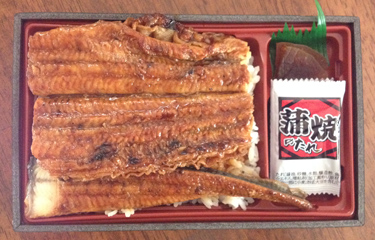The return of glass eels to Japan improved this year, but a subcommittee of the Fisheries Policy Council meeting held in Tokyo approved maintaining the current cap on the number that can be stocked to aquaculture ponds in line with a regional resource management agreement.
The amount of elvers of the Japanese eel, anguilla japonica, collected in Japan had been in decline since the latter half of the 1950s, corresponding with channelization of rivers for flood control and filling of wetlands for reclamation.
The current cap on pond stocking of 21.7 metric tons (MT) was set with neighboring countries in 2015, as part of "Eel Emergency Measures" following several years of dangerously low returns. Other measures in Japan included support to eel farmers and habitat restoration.
An annual report issued (in Japanese) by the Fisheries Agency, “About the situation and countermeasures surrounding eels,” gives details on the permissible stocking, price and production trends, and imports. An English pamphlet prepared by the All Japan Association for Sustainable Eel Aquaculture Incorporated gives the same background information, but without the most recent price and volume data.
Although Japan is a major producer of eel, it is also the main market for imports. In 2018, out of a total of 48,547 MT fattened eel supplied to the Japanese market, 31,410 MT (64.7 percent) was imported, while 17,071 MT was domestically raised and 66 MT was from the wild capture fishery. The ratios have remained relatively stable from 2014. These figures are down sharply from the consumption peak year of 2012, when out of a total supply of 158,094 MT, 133,211 MT (or 84 percent) was imported, and mostly consisted of European eel cultured in China.
Japan has cooperated with its regional neighbors to manage the resource and also to limit the amount of other eel species that can be stocked. Under an agreement that took effect from the 2016 fishing season, Japan is allowed to stock a maximum of 21.7 MT of juvenile Japanese eels, while China is allowed 36 MT, South Korea 11.1 MT, and Taiwan 10 MT. Stocking of other species of eels is also capped at 3.5 MT for Japan, 32 MT for China, 13.1 MT for South Korea, and 10 MT for Taiwan.
“Other species” consists mainly of American eel, following a ban on exports of the European eel by the European Union. European eels were listed in the Annex of the Washington Convention (CITES) in 2007, and trade outside the E.U. has been restricted since 2009.
This year, through the end of April, 11.1 MT of domestically harvested elvers and 7 MT of imports were stocked, for a total of 18.1 MT. This is slightly down from the 20.1 MT (17.1 MT domestic and 3 MT imported) of year 2020.
The transaction prices reported by the Fisheries Agency report for elvers has declined in recent years from a peak of JPY 2,990,000 (USD 26,979.80, EUR 22,617.67) per kilogram in 2018, to JPY 2,190,000 (USD 19,760.08, EUR 16,563.51) in 2019, and JPY 1,440,000 (USD 12,991.76, EUR 10,889.60) in 2020.
“Doyou-no ushi-no hi” (mid-summer day of the ox) is a traditional day for consuming eel in Japan, falling on 28 July this year. Many traditional “kabayaki” eel restaurants have already closed due to the high price of their main ingredient, but beef bowl shops, convenience stores, and supermarkets have stepped in to offer eel specials on the day.
With a state of emergency still in effect in Japan, it is expected that demand for home consumption will be brisk. In the main cities of Tokyo and Osaka, although restaurants are allowed open until 8 p.m., alcohol can only be served until 7 p.m., and parties are to be limited to two people. Since the Olympics will be airing on the day, it is expected that people will buy eel online or at the supermarket to eat at home while watching the games.
Eels generally mature to a saleable size in one year, but eels stocked late in the season may be carried over to the next year. This year, there are many oversized eel on the market, as producers carried over eel rather than selling into the suppressed restaurant market. The average sizes are about 1.5 times the usual, and large eels are about two and a half times as plentiful as last year. Prices of fattened eel to consumers are expected to fall about 10 percent from last year.
The hometown tax gift system (furusato nozei), in which taxpayers can freely specify a town to which they would like to send a portion of their taxes – and receive a gift in return – is also likely to give a boost to eel sales. Luxury foods are the most popular gifts. As people have more time at home, they are more likely to take the time to participate in the scheme.
Photo by Chris Loew/SeafoodSource







